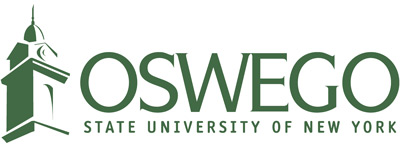Accessibility
New York State Office for Technology Policy P09-005 (PDF). requires that "... state agency web-based information and applications are accessible to persons with disabilities." Federal standards mentioned in the policy can be found here. Also see FAQs (PDF).
WHAT IS WEB CONTENT ACCESSIBILITY?
Accessibility is a measure of how easy it is to access, read, and understand the content of a web site, particularly via "nonstandard" access methods (i.e., browsers that read a web page to a non-sighted person).
WHY IS IT IMPORTANT?
Approximately 10% of all web users are persons with disabilities, many of whom are using assistive web technologies.
Designing for accessibility also makes web pages available to the growing number of users who surf the web with mobile phones, PDAs and automobile accessories, making your pages accessible to the widest possible audience.
WHICH PAGES ON CAMPUS MUST COMPLY?
All "official" and "authorized" pages must be accessible.
Official pages include the home page and all subsidiary pages related to the mission of the institution (i.e., the catalog, schedules, institutional policies, etc.).
Authorized pages are those with the endorsement of a specific division, department or other unit that publishes and maintains them and are linked to the official campus pages.
Personal pages are currently exempt, unless they are being used in support of coursework or as authorized pages (as defined above). It is recommended as a matter of good design that personal pages also be made accessible.
HOW CAN PAGES BE MADE ACCESSIBLE?
Here's an introduction to accessibility on the W3C site. Another good introduction is on the WebAIM site.
On our site:
- Alt tags for Images: When inserting an image you fill in a description that communicates the purpose of the graphic, not its appearance.
- Use the ‘Format' drop-down in the XHTML Editor. I.e., Heading1 - These head tags are interpreted by screen readers.
- Tables - Screen readers need to have a description of what is displayed in a table when used to display data. See: http://webaim.org/techniques/tables/
- PDFs: Word 2007 files can be made into accessible PDF files. Documentation is at:
http://www.oswego.edu/training/AccessiblePDFfromWord.pdf - Forms: Ensure that every form element (text field, checkbox, dropdown list, etc.) has a label and make sure that label is associated to the correct form element using thetag.
- Techniques for Adobe Acrobat PDF files:
Files created by Acrobat can now be made accessible. - Multimedia files - mandates state we provide captioning and/or text equivalents our multimedia content.More information >>
VALIDATION:
Cynthia Says - will test a page at a time on the Web or multiple pages if the application is downloaded and installed.
A-Prompt Toolkit - a free download that will test and repair pages.
Lynx - Lynx is a text only browser that is on Rocky. If all page content is viewable (and makes sense) in Lynx, it will most likely pass accessibility requirements.
To use Lynx, access it as follows:
Sign in to Rocky as if checking e-mail. Instead of typing "pine" type "lynx" followed by the complete URL (including the http://) of the page that you wish to view and hit the enter key. Options for navigation are located at the bottom of the screen. To exit, hit "q" to quit.
Lynx Emulators that work via a Web browser are also available. Go to Lynx-Me or Lynx Viewer and follow the instructions provided.
ADDITIONAL INFORMATION & RESOURCES:
WebAim.org
Sitepoint article on Section 508 Accessibility
Accessible Documents - From Maine Cite
10 Quick Tips to Make Accessbile Web Sites - From W3C
Universal Accessibility for NYS Web Sites FAQ (MS Word 473K)
Accessibility and Web Design: Why Does It Matter? - Article and resources from the Language, Learning and Technology journal
Usable Web: Accessibility - Accessibility links from Jacob Nielsen
Accessible Web Page Design - Comprehensive, well-maintained list of accessibility resources
Accessibility and the Web - from About.com
Web AIM - Web Accessibility in Mind. Web AIM checklist (PDF file, opens in new window)
WebABLE - More disability-related web resources
Equal Access to Software and Information (EASI): Web Design Access Kit
HTML Tidy - Cleans up HTML, including problematic code generated by pre-2000 versions of FrontPage


